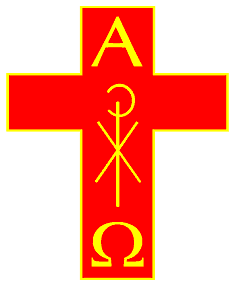Supplying customers throughout the UK and Worldwide...
See us on Facebook
Like and Subscribe on YouTube
SCP members click here

+44 (0) 1670 362647 / +44 (0) 7774 031055
Report a bug here
Suppliers of church furnishings, consumables, garments and much more...

Exorcism
Exorcism is the religious practice of evicting demons or other spiritual entities from a person or an area which they are believed to have possessed. Depending on the spiritual beliefs of the exorcist, this may be done by causing the entity to swear an oath, performing an elaborate ritual, or simply by commanding it to depart in the name of a higher power. The practice is ancient and part of the belief system of many cultures and religions.
Requested and performed exorcisms occurred rarely until the latter half of the 20th century where the public saw a sharp rise due to the media attention exorcisms were getting. There was “a 50% increase in the number of exorcisms performed between the early 1960s and the mid-1970s”.
In Christianity, exorcism is the practice of casting out or getting rid of demons. In Christian practice the person performing the exorcism, known as an exorcist, is often a member of the Christian Church, or an individual thought to be graced with special powers or skills. The exorcist may use prayers and religious material, such as set formulas, gestures, symbols, icons, amulets, etc. The exorcist often invokes God, Jesus and/or several different angels and archangels to intervene with the exorcism. Protestant Christian exorcists most commonly believe the authority given to them by the Father, Son, and Holy Spirit (the Trinity) is the source of their ability to cast out demons.
In general, people considered to be possessed are not regarded as evil in themselves, nor wholly responsible for their actions, because possession is considered to be unwilling manipulation by a demon resulting in harm to self or others. Therefore, practitioners regard exorcism as more of a cure than a punishment. The mainstream rituals usually take this into account, making sure that there is no violence to the possessed, only that they be tied down if there is potential for violence.
In Catholic Christianity, exorcisms are performed in the name of Jesus Christ. A distinction is made between a formal exorcism, which can only be conducted by a priest during a baptism or with the permission of a bishop, and "prayers of deliverance" which can be said by anyone. The statue of Saint Philip of Agira with the Gospel in his left hand, the symbol of the exorcists, in the May celebrations in his honour at Limina, Sicily
The Catholic rite for a formal exorcism, called a "Major Exorcism", is given in Section 11 of the Rituale Romanum. The Ritual lists guidelines for conducting an exorcism, and for determining when a formal exorcism is required. Priests are instructed to carefully determine that the nature of the affliction is not actually a psychological or physical illness before proceeding. In Catholic practice, the person performing the exorcism, known as an exorcist, is an ordained priest. The exorcist recites prayers according to the rubrics of the rite and may make use of religious materials such as icons and sacramentals. The exorcist invokes God—specifically the Name of Jesus—as well as members of the Church Triumphant and the Archangel Michael to intervene with the exorcism. According to Catholic understanding, several weekly exorcisms over many years are sometimes required to expel a deeply entrenched demon.
Saint Michael's Prayer against Satan and the Rebellious Angels, attributed to Pope Leo X, is the strongest prayer of the Roman Catholic Church against cases of diabolic possession.
The Holy Rosary also has an exorcistic and intercessory power.
We offer a limited number of books and guides below due to the fact that many are quickly removed from publication or become unavailable.


Understanding Exorcism
An introduction to the origins and present day use of exorcism.
Both secularism and superstition have popularised some very distorted ideas about exorcism. This booklet, written by an experienced exorcist, looks at its origin in the Gospels and its practice in the Church today. Different kinds of demonic influence are discussed, including their relation to conversion and sin and mental illness. Above all the text gives the good news that in Christ the Devil is already defeated and that the Church carries this victory to those in need.
A6 paperback format

Manual of Minor Exorcisms and Deliverance Prayers in Latin & English
This book contains prayers for use by priests without faculties for the sake of helping to liberate those under diabolic influence, including several different forms of exorcisms in Latin as well as prayers in English.
An absolute must have book for all Ministers
452 pages

